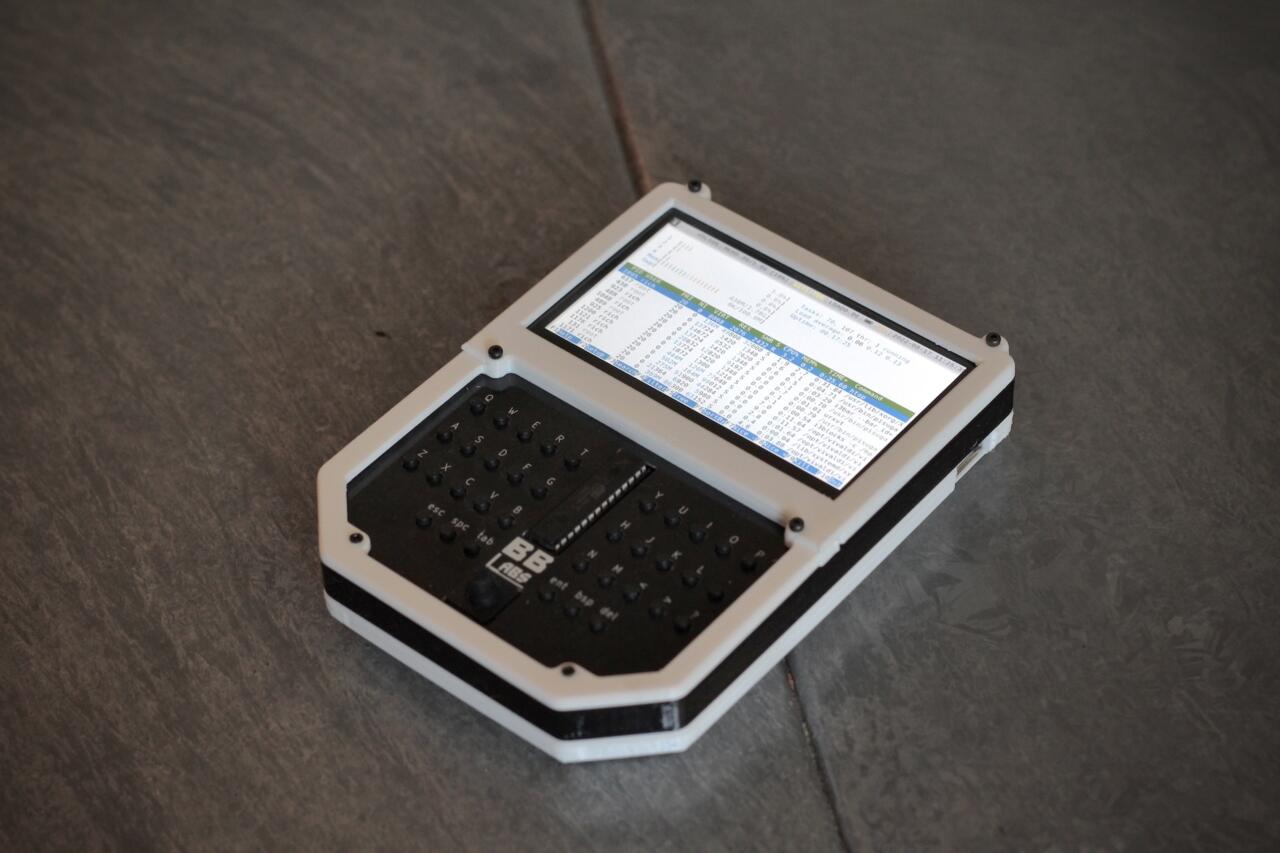
In 2023, it’s fair to say that the cyberpunk future promised to us by books like Neuromancer and Snow Crash hasn’t exactly come to fruition. The wearable computers like “cyberdecks” or even the wrist-mounted Pip-Boys of the Fallout series seem destined to remain the stuff of science-fiction, at least for now. That is, of course, unless you decide to build them yourself, which is exactly what a small group of DIY enthusiasts have done over the past few years.
There’s an entire community of talented builders using tiny computers like the Raspberry Pi to build the cyberpunk setups of their dreams. And while none of them are going to replace your smartphone anytime soon, they’re not just idle props, either.
Brendan Charles is a tinkerer and hacker who has experimented with miniature computers like the Raspberry Pi for years now. As a fan of cyberpunk movies and TV of the ’80s and ’90s, Charles always imagined a different sort of future than the one that’s come to pass–glitchy CRTs and homemade hacking kits, not identical iPhones in every pocket.
“We were shown a future on TV and in movies that featured these chunky computers that ran on cartridges and monochrome displays that had tracking issues,” Charles tells GameSpot. “In reality, we got retina display iPhones that are almost too perfect. I think the cyberpunk community yearns for this future we never got and making these kinds of projects allows us to make it a reality.”

During COVID lockdown, Charles created the Ceres 1, a battery-powered micro-PC that looks right out of Night City. However, it wasn’t Cyberpunk 2077 that inspired Charles to create this device, but rather the TV show Halt and Catch Fire, which details the early days of the computer industry. Based in part on the design of a child’s toy called the Talking WizKid, the Ceres is exactly the sort of micro-laptop I imagined owning as a kid, complete with full keyboard and fold-up design. It’s an impressive bit of hardware, but Charles says that making your own DIY device isn’t as hard as it looks. To him, it’s just a matter of perseverance.
“You can find premade modules and connectors to do almost anything you want, from LCD displays, to controllers, to battery packs,” he says. “The learning curve is more about finding the right places to look for these parts, like Adafruit and Mouser. For me, the act of making has a creative snowball effect. At the beginning of this endeavor my skills were very basic, but along the way I picked up soldering, 3D printing, coding, painting and sanding techniques, as well as basic electronics.”
Fellow tinkerer Richard Sutherland has a similar origin story. He always wanted a TRS-80 Model 100 as a kid, as he was drawn to its unusual form factor and portable design. The introduction of single-board computers like the Raspberry Pi allowed him to experiment with building his own devices as an adult, but it wasn’t until the introduction of 3D printing that he truly jumped headfirst into the space. Now he makes professional-grade hobby projects under the name BrickBots online, including an extremely impressive steel-frame cyberdeck. Sutherland says he uses the device to play text adventure games on the go–“it just feels right,” he explains–but he also uses it as a terminal to access his other computers.
Sutherland’s creations truly embrace the hacky side of the DIY space. One of his recently completed projects is the HandiPi, a device resembling a high-tech graphing calculator that he calls a “hacking deck.” Featuring a custom miniature keyboard, a touchscreen display, and a four-hour battery life, it lets him take all of his computing and core apps on the go. He also says that it’s useful for hacking at your battlestation when your main computer is doing another task, such as processing video. Though he understands why some people might think that the HandiPi is a bit over-the-top, he says that DIY devices are about more than just pure utility.
“I don’t carry the HandiPi around with me everywhere, but my iPhone is right there all the time, so I’m following the same value calculus there,” he explains. “The economics of mass design/produced stuff has really led to a huge improvement in quality of life for many people, and I think it’s generally a force for good. But there will always be people interested in DIY or unique things that don’t make sense to mass-produce.”

Sutherland recently completed a device that he calls the “PiFinder,” which uses a combination of a high-quality camera and a telescope to help the user determine what they’re looking at. He acknowledges that the project is quite niche, but it’s exactly the sort of extremely specific device he enjoys making.
Currently, Charles’s work has taken a turn for the strictly practical, as he’s working on a typing-deck-like device that combines an e-ink display and a built-in keyboard. Similar products do exist on the market, but for Charles, it’s all about making it your own rather than buying into a proprietary ecosystem.
“I think for every megacorporation with proprietary tech that exists, there’s an equal and opposite grassroots/open alternative out there to subvert them. I look at things like the iPhone jailbreak community and the things they were able to do with ‘locked’ devices, it’s really impressive. I think these jailbreakers, as well as the open-source community at large, are the closest thing we have to real cyberpunk in the real world.”
Charles is convinced that the DIY movement will continue to flourish as tech companies grow larger and potentially more aggressive in pursuing walled gardens for their software. However, he worries that the increasing price of components will lock some people out of the hobby, as it simply may not be feasible to build your own devices unless you have some spare cash to invest. “The Raspberry Pi was created with the idea of being ‘the $25 computer,’ yet you’d be hard pressed to find a new one for under a hundred dollars these days. I hope the industry will course-correct soon.”
All-in-all, while the cyberpunk dream of a grimy future filled with homemade wrist-mounted computers might never come to pass, you can still definitely build one yourself if you’re so inclined. Sutherland posts all his build guides and specs on his BrickBots GitHub, along with many other hobbyists in the space, so if you’re interested, buy a 3D printer and craft the Pip-Boy of your dreams.
The products discussed here were independently chosen by our editors.
GameSpot may get a share of the revenue if you buy anything featured on our site.


